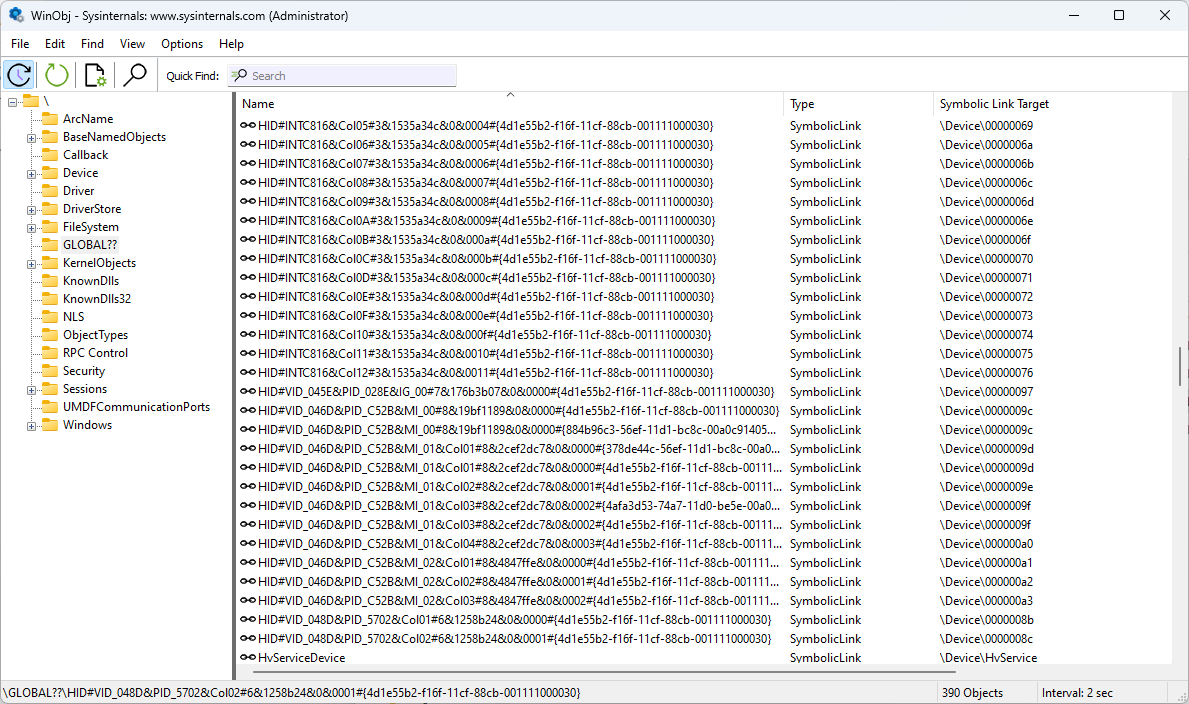There are various ways to retrieve the Windows "Device Name" of a HID device, GetRawInputDeviceInfo with RIDI_DEVICENAME being one way to do it.
Given the example name:
\?\HID#VID_FEED&PID_DEAD#6&3559c8ea&0&0000#{378de44c-56ef-11d1-bc8c-00a0c91405dd}
I'm wondering if there is any documentation whatsoever on what is what in this string?
\?\HID#VID_AAAA&PID_BBBB#C&DDDDDD&E&FFFF#{GUID}
So the obvious ones are A(VID), B(PID) and the GUID on the end. What I'm wondering is what EXACTLY are C, D, E and F?
It seems that C and D are unique even if you plug in two of the exact same HID devices which is great for my problem, but I'd feel more comfortable if I could know exactly how this is determined on a per OS basis, or at least that it follows some known format.
I have been googling like a madman trying to figure this out, am I missing something obvious?
Thanks in advance

